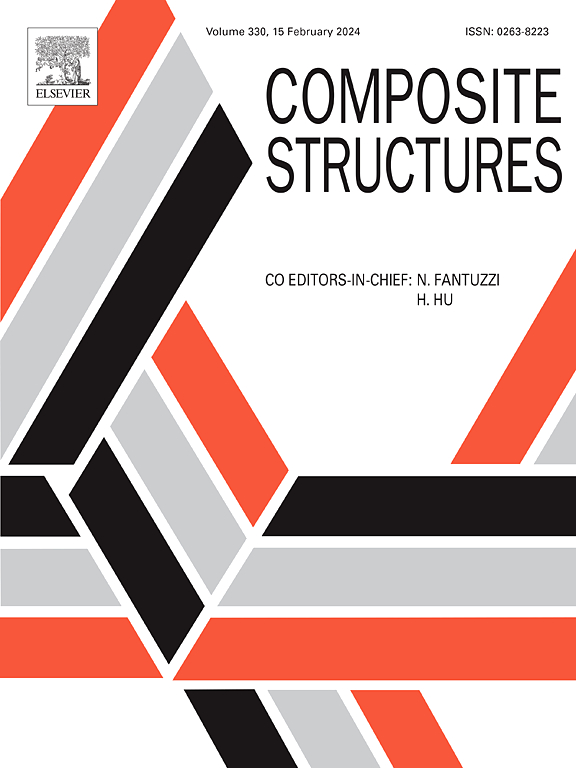Toughening mechanisms of fiber-reinforced composites: A micromechanical heterogeneous peridynamic model
IF 6.3
2区 材料科学
Q1 MATERIALS SCIENCE, COMPOSITES
引用次数: 0
Abstract
Exploring strategies for toughening the fiber-reinforced composites (FRCs) is of significant interest for boosting their high-performance applications. A novel micromechanical peridynamic (PD) model incorporating five types of non-local interactions was proposed to unravel the toughening mechanisms for laminated composite materials. This PD model was validated by three examples including the prediction of off-axis modulus of laminates, the cracking of center-cracked laminates and the compact tension test. Diverse experiment-consistent crack patterns were captured. The effects of the mechanical properties of fibers, matrix, their interface and the interlayer interface on the force–displacement curves obtained from compact tension tests were systematically studied. It was found that the major load carrier is the fiber, follow by the fiber–matrix interface, the interlayer interface and the matrix. Results show that the stiffening and strengthening of fiber–matrix interface and interlayer interface can greatly enhance the fracture toughness of the composites. This toughening is resulted from a synergetic improvement of load bearing capacity in the interlayer bonds, fiber–matrix bonds, the fiber bonds and matrix bonds. To leverage this synergetic effect, interface and interlayer enhancement strategies, e.g., brick–mortar structure and the Bouligand structure appeared in biological materials, are highly recommended for designing FRCs with improved toughness.
纤维增强复合材料的增韧机理:微力学非均质周动力模型
探索纤维增强复合材料(FRCs)的增韧策略对提高其高性能应用具有重要意义。为了揭示层合复合材料的增韧机理,提出了一种包含五种非局部相互作用的微力学周动力学模型。通过层合板离轴模量预测、中心裂纹层合板开裂和紧致拉伸试验3个算例验证了PD模型的正确性。捕获了多种实验一致的裂纹模式。系统地研究了纤维、基体及其界面和层间界面的力学性能对紧致拉伸试验得到的力-位移曲线的影响。结果表明,负载载体主要是光纤,其次是光纤-基体界面、层间界面和基体。结果表明,纤维-基体界面和层间界面的加筋强化能显著提高复合材料的断裂韧性。这种增韧是由于层间键、纤维-基体键、纤维键和基体键的承载能力的协同提高。为了利用这种协同效应,界面和层间增强策略,例如生物材料中出现的砖-砂浆结构和Bouligand结构,被强烈推荐用于设计提高韧性的FRCs。
本文章由计算机程序翻译,如有差异,请以英文原文为准。
求助全文
约1分钟内获得全文
求助全文
来源期刊

Composite Structures
工程技术-材料科学:复合
CiteScore
12.00
自引率
12.70%
发文量
1246
审稿时长
78 days
期刊介绍:
The past few decades have seen outstanding advances in the use of composite materials in structural applications. There can be little doubt that, within engineering circles, composites have revolutionised traditional design concepts and made possible an unparalleled range of new and exciting possibilities as viable materials for construction. Composite Structures, an International Journal, disseminates knowledge between users, manufacturers, designers and researchers involved in structures or structural components manufactured using composite materials.
The journal publishes papers which contribute to knowledge in the use of composite materials in engineering structures. Papers deal with design, research and development studies, experimental investigations, theoretical analysis and fabrication techniques relevant to the application of composites in load-bearing components for assemblies, ranging from individual components such as plates and shells to complete composite structures.
 求助内容:
求助内容: 应助结果提醒方式:
应助结果提醒方式:


